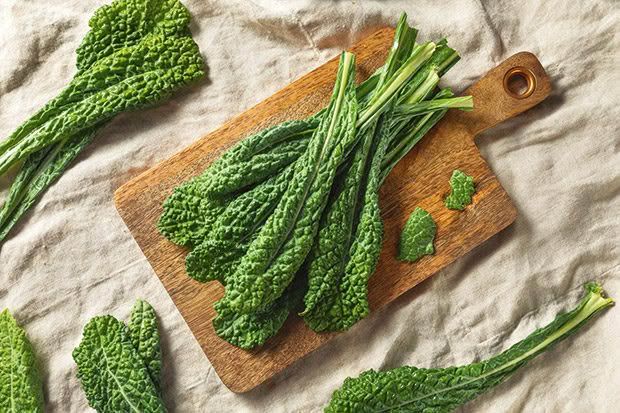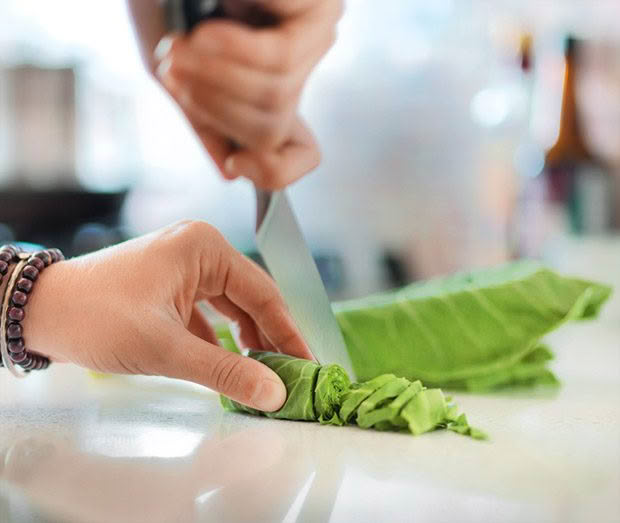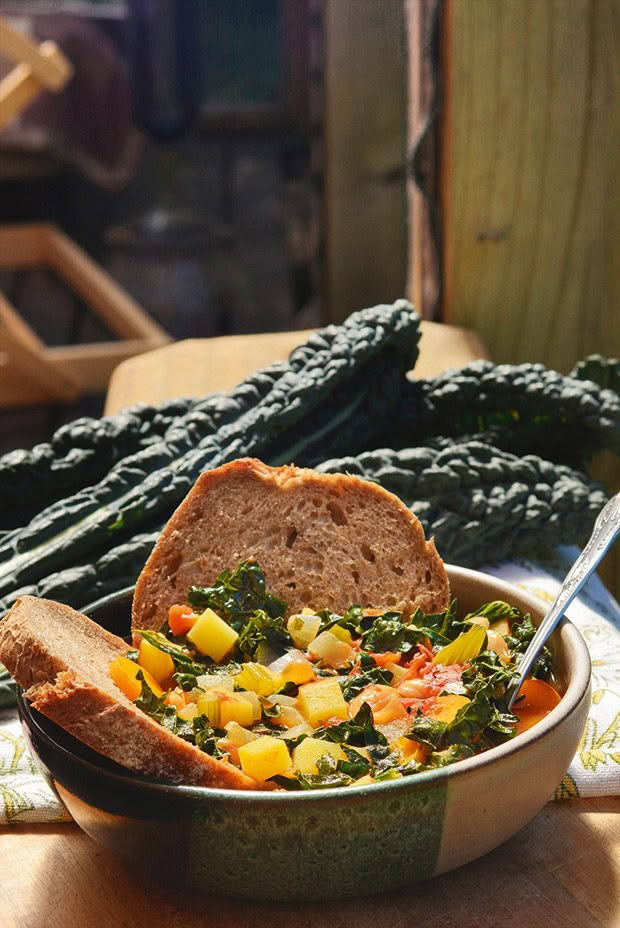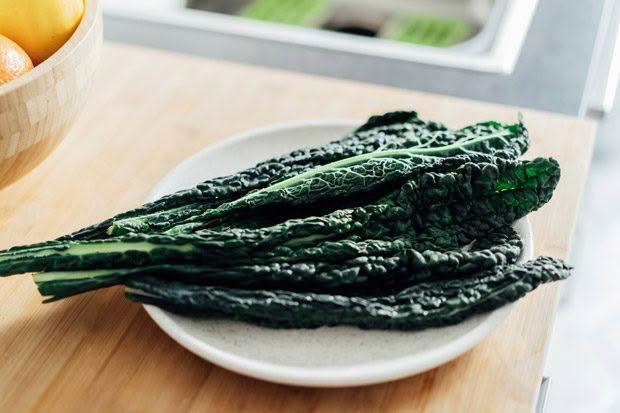Why you should add cavolo nero to your garden (PLUS a one-pot ribollita soup)

It’s hearty, homegrown, and sounds as good as it tastes (if you say it in Italian).
Words: Kristina Jensen
It goes by many names: black cabbage, pineapple cabbage, palm-leaf cabbage, Tuscan kale. It’s sometimes referred to as kale’s ‘tall dark Italian cousin’. Cavolo nero is a member of the brassica family and in NZ, we grow it for people and livestock, which has led to a wide variety of roadside kale-like crosses.

Brassicas are a promiscuous lot, interbreeding quite happily. If you want to save seeds, it’s best to grow them as far as possible from each other in your garden. This nutrient-rich vegetable is very hardy and gets sweeter after a frost.
I’ve seen a food writer refer to the leaves as having a bubblewrap texture. The leaves are very pretty, but the ‘bubbles’ are great hiding places for critters. Wash thoroughly to flush them out.
The unusual foliage cooks to an intense dark green. It needs a good 20 minutes of steaming or simmering to soften. If you pick it leaf by leaf, a cavolo nero plant will produce a steady supply of greens for up to six months. If you keep it going this long, look out for white butterfly caterpillars that can quickly strip all the foliage off, leaving only the stalks behind.
Cavolo nero can get quite tall so give it plenty of space. My son Theo (then aged 8) was dwarfed underneath the palm-like canopy of a friend’s plant.
HOW TO CHIFFONADE
Use this for thicker green leafy vegetables, such as silverbeet, kale, spinach, and cavolo nero. Strip the leaves off the stalks using a knife or your fingers. Lay the leaves flat, on top of one another, then roll them up into a tight, cigar-like tube.
Use a sharp, thin-bladed knife to slice the leaves into thin, ribbony spirals. Add to soups such as ribollita, quiches, stews, and salads.

The chiffonade (sheef-o-nard) technique is the perfect way to slice cavolo nero as it can be a bit chewy if chopped into large chunks. Slicing the cavolo nero using this method is highly recommended if you’re adding it to your ribollita.
Kristina’s One-Pot Ribollita Soup

It’s rather pleasing to discover that a simple dish I’ve been making forever has a fancy foreign name. We’ve always called it bean and tomato or ‘one pot wonder’ soup. Turns out that in Tuscany, it’s called ribollita (re-bol-eee-tah), which is a really lovely way of saying reboiled.
I know ‘reboiled’ doesn’t sound very appetising, but I promise you, this dish tastes best when reheated and eaten the day after you make it. It’s an example of country-style cooking, or ‘peasant food’ that has never gone out of fashion, and it’s one of our family’s favourites through autumn and winter.
This hearty soup-stew will keep going for a third day if you add leftovers and a little more liquid to the pot on day two. The result is a richer, more flavourful dish that will fill you up for a second time. Almost as satisfying as the discovery of the Italian name for ‘my’ soup, was finding the French word for a culinary technique I’ve used for almost as many years.
Serves: 4 generous portions, plus seconds for the next day
Time: 1½ – 2 hours
INGREDIENTS
2 small onions, red or white
3 garlic cloves
3 sprigs of fresh thyme, or ½ tsp dried thyme
2 carrots
2 medium-sized potatoes
6 celery stalks
3 parsley stalks
2-4 tbsp olive oil
1 x 400g can of diced tomatoes
1 x 400g can of cannellini or butter beans
10-14 leaves of cavolo nero
1 litre of vegetable stock
200ml white wine
salt and pepper to taste
METHOD
Peel and chop the onions, peel and crush the garlic cloves, finely slice the celery, and chop the carrots into small slices or chunks. I don’t peel my carrots, but you can do so if you wish.
Fry in olive oil on a medium heat for 20-25 minutes until soft and slightly caramelised. Chop the parsley and stir into the vegetables.

Wash the potatoes (again, I don’t peel them). Chop them and the canned tomatoes into chunks and add to the pot. Cook for a further 10 minutes on a low simmer.
Cut the cavolo nero using the chiffonade method. Add the beans and their juice (aquafaba), stock, white wine, and cavolo nero. Bring the pot back to a gentle simmer and cook for half an hour.
Season with salt and pepper to taste, then turn off the heat. You can either eat it immediately or cover the pot, let it sit overnight, then reheat it for a richer taste the next day.
HOW TO SERVE TUSCAN-STYLE
Cut 3-4 thick slabs of a really good quality sourdough bread and lay on top of the soup (still in its pot) for 10 minutes before serving. Drizzle a good quality olive oil over the top and garnish with chopped parsley.
MORE HERE
Recipe: Ruth Pretty’s Pumpkin & Red Pepper Tart with Creamy Goat Cheese
Love this story? Subscribe now!
 This article first appeared in NZ Lifestyle Block Magazine.
This article first appeared in NZ Lifestyle Block Magazine.
